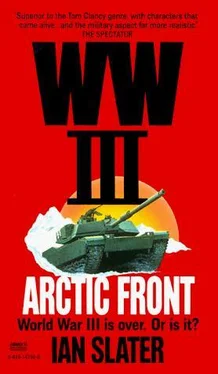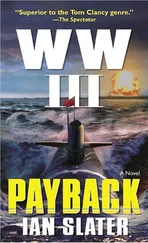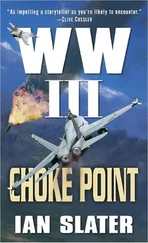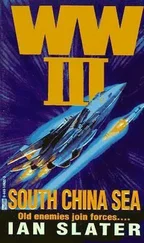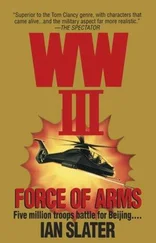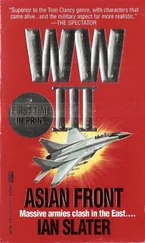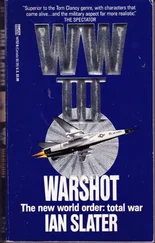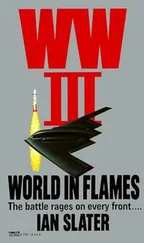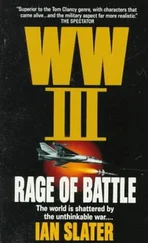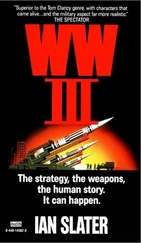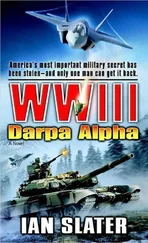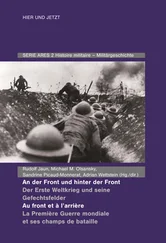It would be a decisive battle, Norton believed, because while there were thousands of Siberian main battle tanks and over fifty divisions within the Far Eastern TVD, Freeman’s master stroke had been in landing, like MacArthur had at Inchon, where no one thought he should or ought to land — on a remote part of the Southern TVD coastline. But like most master strokes it would be recognized as such only if Freeman won.
Despite the heavy armor reported to be concentrating around Chichatka, which Freeman was about to engage, U.S. air superiority meant that it was taking time for the Siberians to bring up troops and more tanks from the flatlands of the Siberian plain. The Siberians had few roads to do it, relying on relatively few rail lines together with the multiple track of the Trans-Siberian, If Freeman could inflict a decisive defeat here at Chichatka and move forward quickly, he might be able to take Irkutsk before the full weight of the Siberian divisions could be brought to bear on Second Army.
Back further in the marine expeditionary unit, Jesus Valdez was getting the news, passed up from the coast quicker than a blizzard, that back home the pounding they had taken on the Never-Skovorodino Road was being reported by the La Roche tabloid chain as the “Second Army Stuck in Neverland.” The more respectable media, it was said, had begun its reporting of the effect of the Siberian missile attacks in a more dignified manner, but once the La Roche papers had taken the low road, “market forces,” as they were saying on “Washington Week in Review,” had moved even the more “responsible” papers to follow La Roche’s sensationalism. The cruel truth for Freeman’s troops was that Second Army was becoming something of a joke; already there were not-so-subtle suggestions in Congress that Freeman ought to be replaced. Valdez was flicking the safety catch of his squad automatic weapon back and forth until Private First Class Joe Kim told him to knock it off.
“I was just thinkin’,” said Valdez, “that if I saw that CBN son of a bitch, I ‘d blow his friggin’ head off.”
“Easy, Juan,” cautioned Kim, who in the past had been the butt himself of jokes about his surname, it being the same as General Kim of the North Korean army, whom Freeman had defeated decisively in the raid on Pyongyang. “Don’t get all het up about it, man. Save it for the Thirty-first.”
“Yeah,” said Valdez. “Where the hell are they?”
“Don’ worry,” said Pirelli, who hailed from Brooklyn. “They’ll get here, I guarantee.”
“Not if Freeman takes out those wagons up ahead,” said another marine. “His M-1s’ll own the road.”
“That’s right, man,” said Kim, who as a boy — before his family emigrated to the United States — had fed himself on movies from the sixties and still put “man” at the end of everything he said, believing it made him as American as baseball. “Hey, hey,” he said excitedly, looking overhead. “You see that, man?”
An American cruise missile was passing over them, just above the top of the hills that spread north of the Amur, its white speckle camouflage making it difficult to spot but its stubby, squarish wings cutting the cold, Arctic air and making a sound like cars whipping past one another, the subdued growl of its motor coming to them only after it had passed overhead. Then there was another, and another.
“Holy cow,” said Valdez. “Ain’t that somethin’!” The effect on morale of finally striking back, now that the Siberian trajectories had been back-tracked, was electric, sending a surge of badly needed confidence through the forward units of Second Army.
Apache and Cobra gunships flying NOE — nap of the earth — missions following the contours of the taiga ahead of Freeman’s armored column were so close to the treetops, it was regarded as inevitable that some would be lost to wind sheer. The gunships skimmed the up and down of air currents over the white, rolling sea of forest. A sudden unexpected drop of a few feet, and the trees would reach up and take you down. But none were lost — at least not on the way in, the pilots long used to such tactics in western Europe, the steady stream of information needed to assist in NOE fed back from the twenty-five-inch-diameter combination thermal imaging sensor, laser, TV, and boresight system through a.1-inch-diameter tube to video displays in the cockpit. Each pilot, in symbiotic relationship with the cyclic control column, was ready to touch-alter forward, backward blade, pitch, and yaw controls in response to the main computer display.
The cockpit of the lead chopper of the thirty sharp-nosed, 140-mile-per-hour AH-1S Cobras was suddenly invaded by a loud buzzing noise and flashing red light. The rate of climb had fallen precipitously in a downdraft; the craft’s pod load of eight TOW, or tube-launched, optically tracked, wire-guided, antitank missiles, and two pods of nineteen 2.75-inch rockets for softer targets — should infantry be sighted — were abnormally buffeted. In addition there was the weight of the universal-swivel, turret-mounted, thirty-millimeter machine gun and its ammunition belt under the nose with which to contend. The pilot instantly altered the pitch, the rotors responding quickly in the colder Siberian air, giving more lift than in the warmer climes of western Europe and Southeast Asia.
Still, it was hair-raising flying, heartbeat and blade beat alarmingly out of synch at times, the first tanks in sight either T-72s or 80s; it was difficult to tell because of the camouflage netting. Adding to his anxiety, the pilot was already depressed after having received the news that morning that his brother in the navy had been killed, sucked overboard by the enormous vacuum created when the Missouri had fired one of its salvoes against the Kommandorsky Islands.
But in the split second of sighting the target a half mile away and racing toward him, the pilot forgot all the questions he wanted answered about his brother’s death — such as why the hell he was out on deck when the guns were fired? He felt the adrenaline taking over as he shot off a TOW missile equipped with the latest warhead, upgraded to penetrate — he hoped — the layered reactive armor of the Siberian tanks, the armor that could explode an incoming round, diffusing its impact.
The Cobras, now joined by Apaches, made a force of sixty choppers in all. They swarmed over the taiga that erupted beneath them with streaks of orange light, pale against the snow but thunderous in their explosions. Shrapnel screamed as camouflaged “cold”—therefore not infrared-detectable — antiaircraft quads of rapid machine-gun fire opened up. For all their sophistication and versatility in the air — an aspect constantly celebrated by Hollywood — the truth, as every chopper pilot knew, was that his craft, flying at plus or minus 150 miles per hour, was a slow combatant in the modern world of high-subsonic and supersonic warfare, and low to the trees they were terribly vulnerable.
The Siberian quads continued to unleash a terrible and concentrated fire by means of the single most important an-antihelicopter defense of modern warfare: the Soviet-developed high-velocity AIRDEM, or air defense mines. The weapon was really misnamed as it was not, strictly speaking, an antiaircraft mine at all, having no effect on faster, fixed-wing aircraft. Rather it was specifically an antihelicopter weapon. But misnamed or not, the Siberian radar-and-heat-sensor-equipped mines exploded in V-shaped cones of shrapnel four hundred feet high and over a hundred yards in diameter.
The mine, triggered either by the approaching rotor slap or engine heat, proved devastating to the U.S. helicopter strike force, knocking out fifteen of the sixty choppers, three of these lost in midair collisions as a direct result of confusion and equipment gone awry in an air whistling with fuselage-smashing metal bits.
Читать дальше
